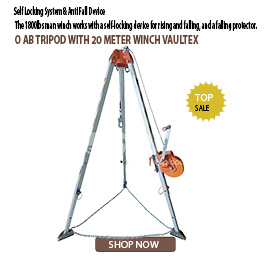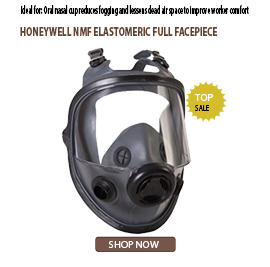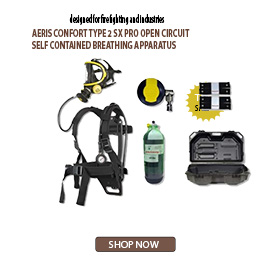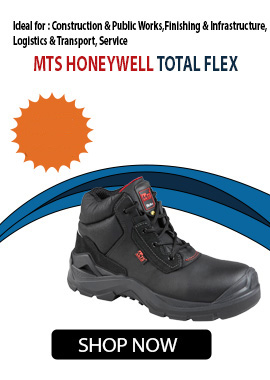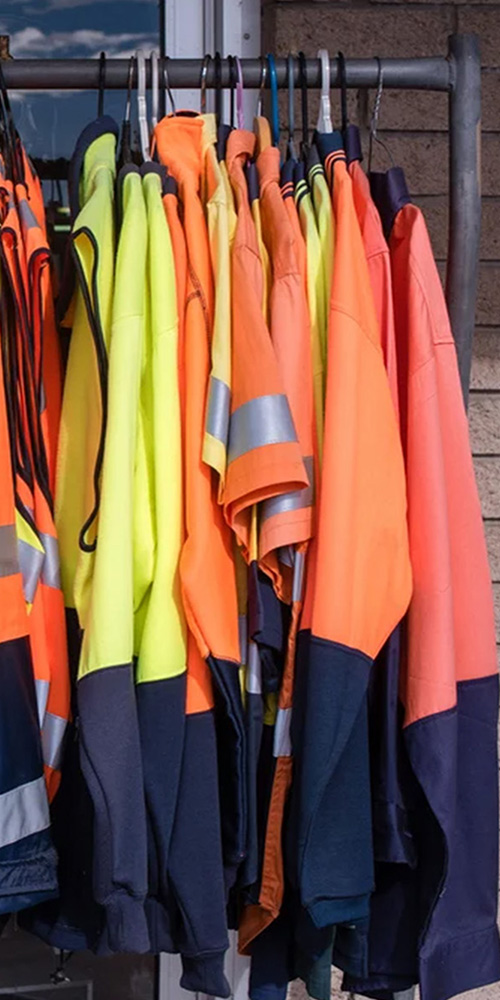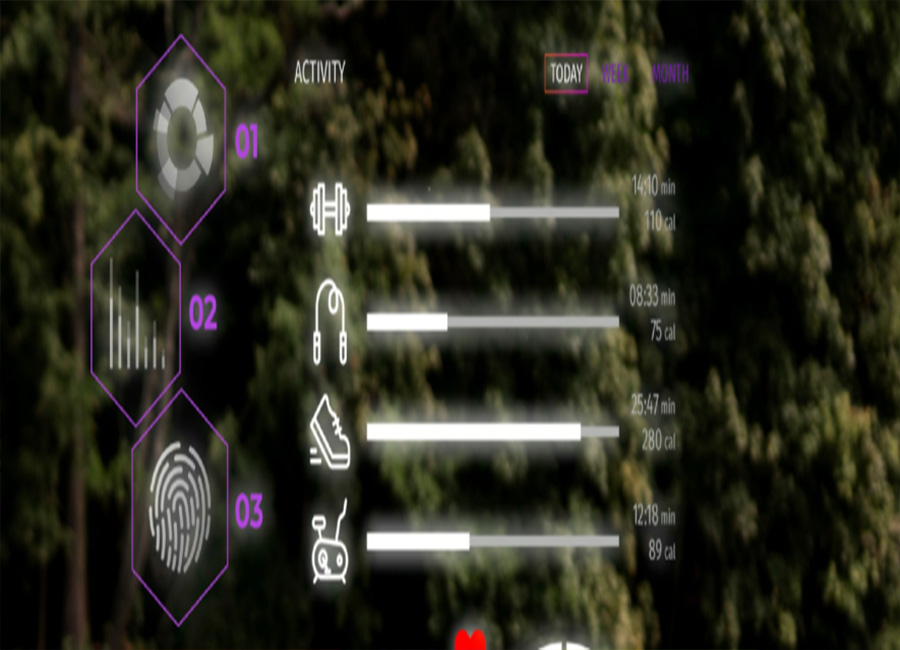What is Lock Out and Tag Out Protection?
Lock Out and Tag Out Protection are Devices and procedures to prevent accidental equipment activation. Lock Out and Tag Out Protection Are used in ICT ,Telecom , Engineering works And Industries
Tag Out Lock Out is a safety procedure that uses isolation to prevent machinery and powered equipment from being used when it is in a dangerous state. This is used to protect workers who work with these machines, or those who carry out maintenance or repair work1. PPE provides protection from this risk and is complementary to lockout/tagout3. Locking Out and Tagging Out should follow a five-step process, from planning to trying out, before work is carried out to help ensure a safe system of work.
What is Lockout Tagout?
Lockout tagout is a protection system against unintentional exposure to hazardous energy from equipment and machinery. A lockout device, such as a padlock, secures the energy isolating device while a tagout device (i.e. a tag) warns employees not to use the equipment.
Importance
One of the most common workplace hazards is the release of hazardous energy during maintenance or repair work on machinery or equipment. This can result in serious injuries or even fatalities if proper safety procedures are not followed. One important safety measure to prevent such accidents is the implementation of lockout tagout (LOTO) procedures. By locking and tagging the machinery or equipment and isolating it from energy sources, LOTO reduces the risks of accidents and injuries. It also reduces the need for costly repairs or replacements and extends the lifespan of equipment.
What is the Difference Between Lock Out and Tag Out?
The difference between lock out and tag out is the device used. The lockout device stops employees from operating the equipment while the tagout device informs them that the equipment should not be operated. Essentially, a tagout device is the second layer of protection against unsafe equipment operation while a lockout device is the first layer.
Lockout Tagout and Machine Guarding
Though the machine guarding standard covers exposure to hazardous energy during normal production operations, it is important to remember that the OSHA lockout tagout standard (instead of the machine guarding standard) will apply during normal production operations if:
- the employee is required to bypass or remove machine guarding
- the employee could be injured due to the sudden energization of equipment
OSHA Lock Out and Tag Out Protection Standard
The OSHA lockout tagout standard generally applies to any activity in which the sudden energization or startup of equipment and machinery could harm employees.
OSHA Lockout/Tagout Exceptions
- Construction, agriculture, and maritime operations
- Oil and gas well drilling and servicing
- Installations under the exclusive control of electric utilities
- Work on cord-and-plug-connected electrical equipment in which equipment is unplugged and the authorized employee has exclusive control of the plug
- Servicing, maintenance, minor tool changes or adjustments, and hot tap operations wherein employees are sufficiently protected by other safeguarding measures
OSHA Lockout/Tagout Violations
From October 2020 to September 2021, the OSHA lockout tagout standard has had 1,440 citations amounting to a total penalty of $9,369,143. This means that the average penalty for a lockout tagout citation is $6,506. To avoid incurring such penalties for one of the most violated OSHA standard, safety supervisors need to be aware of common OSHA lockout/tagout violations such as:
- Failure to identify and isolate all energy sources
- Failure to shutdown
- Failure to de-energize
- Failure to drain residual energy
- Failure to provide lock out tag out training
- Failure to create equipment-specific LOTO procedures
- Failure to conduct periodic LOTO inspections
- Failure to establish a lockout tagout program
- Failure to develop and enforce a lock out tag out policy
Improve your EHS Management
Cultivate a safe working environment and streamline compliance with our EHS solutions.
Explore now
Who is Involved in a Lock Out and Tag Out Protection?
Aside from the safety supervisor who is responsible for lockout tagout, other key personnel involved are authorized and affected employees.
- Authorized employees in a lockout/tagout are those who lock or tag equipment so that they can safely perform the servicing or maintenance.
- Affected employees in a lockout/tagout are those who operate the equipment on which servicing is performed or who work in the area where the servicing is performed.
Lock Out and Tag Out Protection Devices
Employers are required by the OSHA standard to provide lockout tagout devices that are durable, standardized, substantial, and identifiable. LOTO devices cannot be reused. The following information is primarily based on the OSHA lockout tagout standard:
What is an Energy Isolating Device?
These devices help ensure that energy isolation points are secure.
- Electrical lockout devices are used to help secure the electrical power of equipment in an “off” position.
- Multi-purpose cable lockout devices are commonly used for the lockout of several energy isolation points.
- Valve lockout devices are used to conceal or physically prevent the operation of valves.
Energy Isolating Device
Energy isolating devices DO NOT INCLUDE push buttons, selector switches, and other control circuit type devices.
What is a Lockout Device?
A lockout device is a device that utilizes a positive means to hold an energy isolating device in a safe position and prevents the energization of equipment and machinery. Examples of lockout devices are padlocks, blank flanges, and bolted slip blinds.
Padlocks
In contrast to ordinary padlocks, these must be issued and standardized by the employer. They must only be used for lockout purposes and are distinguishable from all other types of padlocks in the workplace. Key-retaining padlocks are best for lockout purposes to ensure that the padlock is locked before the key can be removed.
A LOTO padlock should only have one key. Lockout locks should not be keyed alike, in which multiple padlocks can be opened with one key. If the use of keyed alike locks cannot be avoided, limit their distribution among employees.
Lockout Device
What is a Tagout Device?
A tagout device is a prominent warning device that can be securely fastened to an energy isolating device and indicates that both the equipment and the energy isolating device cannot be operated.
Tags
Tags are vital because they act as warnings against potential hazardous conditions when equipment or machines are energized. They provide vital information on the lockout condition of equipment in maintenance and can even contain a photo of the one responsible for specific equipment.
Company-issued tags should be standardized and distinguishable from other tags, include instructions and warnings, be able to withstand the environment they are in, and be attached with a self-locking non-reusable device that can withstand at least 50 pounds of pull force.
Tagout Device
What is a LOTO Box?
Also known as a lockbox or a group lockout box, a LOTO box is used when equipment has several isolation points that need to be secured (with their own energy isolating, lockout, and tagout devices) before it can be locked out. This is referred to as a group lockout or a group isolation.
LOTO Box
How Does a Lockout Box Work?
After completing a LOTO procedure on an isolation point, the employee will place the key to the lockout device in the lockbox and then attach their own personal padlock to the lockbox. After all personal padlocks have been attached to the lockbox, the group isolator will then place an orange or blue lock and an orange tag on equipment to indicate that all isolation points have been secured.
Colors of Lockout Locks and Tags
Though OSHA has not yet provided a standardized color coding system for lockout locks and tags, typical color codes are:
- Red tag = Personal Danger Tag (PDT)
- Orange tag = group isolation or lockbox tag
- Yellow tag = Out of Service Tag (OOS)
- Blue tag = commissioning and test tag
- Red lock = used by an authorized employee to lockout equipment during servicing
- Orange lock = used by a group isolator to indicate that servicing is safe to perform
- Yellow lock = used by an affected employee to lockout equipment before servicing
- Blue lock = used instead of an orange lock for lockboxes with more than 6
isolation points
What is a Lock Out and Tag Out Protection Procedure?
A Lockout Tagout (LOTO) procedure is a list of steps taken in the workplace by different industries to help keep machines and equipment from unintentional energization while they are under maintenance or repair. While it is required by industry standards and regulations, non-compliance with LOTO procedure is one of the most cited OSHA standards violations.
7 Steps of Lock Out and Tag Out Protection Procedure
Also known as LOTO steps, follow this comprehensive guide on how to properly shut down equipment:
Step 1: Preparation – During this stage, the authorized employee should investigate to identify the equipment, machine, or process to be shut down. As a safety measure, this step should also recognize which energy resources must be controlled and highlight all the potential hazards that come with it.
Step 2: Notification – In the second stage, all affected personnel should be notified of the shutdown. Essential items to communicate can include information such as the equipment to be locked out, the reason behind it, the estimated time frame of the shutdown, the authorized personnel for the shutdown, as well as who to contact for clarifications and questions.
Step 3: Shutdown – After the planning stage, the actual equipment shutdown begins. For this process, follow the shutdown procedures established by the manufacturer or the workplace itself. Turn off the controls and make sure that all the running parts of the equipment come to a total stop.
Step 4: Isolation – This stage, also called de-energization—is the part where the authorized person will be needing to remove the equipment from any energy sources it is connected to. Some equipment may need to be shut down by turning off power from the breaker or by simply shutting a valve.
Step 5: Dissipation – In simpler terms, this is the process of removing possible residual energy still in the equipment. Depending on the type of equipment or power source, residual energy can either be disconnected, restrained, relieved, or made non-hazardous.
Step 6: Lockout/Tagout – During this actual lockout/tagout stage, the equipment is locked using energy-isolating devices. The tag to be attached, meanwhile, should contain the name of the person who performed the lockout and other additional information needed.
Step 7: Isolation verification – In this last stage, all the steps conducted have to be re-checked to ensure that everything is as it should be. Treat this as an opportunity to test the equipment by activating the process controls and observing the result. Non-activation of the equipment is a confirmation that energy isolation is completed.
What to Do if An Employee is Not Available to Remove the Lock?
The safety supervisor can remove the lock, provided that:
- they have verified that the employee is not in the facility
- they have received specific training on how to remove the device
- the specific removal procedure for the device is documented and included in the
facility’s lockout tagout program
After removing the lock, the safety supervisor must also contact the employee to inform them the lock has been removed and must confirm that the employee is aware of this before they resume work at the facility.
Establishing a Lock Out and Tag Out Protection Program
To be OSHA-compliant, a lockout tagout program must have 3 core components:
Lockout Tagout Procedures
Safety supervisors need to create equipment-specific LOTO procedures that outline the scope, purpose, authorization, rules, techniques, and means to enforce compliance. Each lock out tag out procedure must include the following, at the minimum:
- a specific statement of the intended use of the procedure
- specific procedural steps for:
-
- shutting down, isolating, blocking, and securing equipment
-
- placement, removal, and transfer of lockout tagout devices
- a description of who has responsibility for lockout tagout devices
- specific requirements for testing equipment to verify the effectiveness
of lockout tagout devices
Lockout Tagout Inspections
The periodic inspection process involves meticulous assessment of equipment and machinery to ensure they are properly locked and tagged out before maintenance or servicing activities. The primary objective of LOTO inspection is to prevent accidental energy releases, such as electrical, mechanical, or hydraulic, which could pose severe risks to the safety of workers. Performing inspections are for trained personnel only. They meticulously examine the lockout devices and tags to verify it is applied correctly, clearly, and easily identifiable. This rigorous process plays a pivotal role in safeguarding the lives of employees, reducing workplace accidents, and promoting a culture of safety within organizations.
Create Your Own LOTO Inspection Checklist
Eliminate manual tasks and streamline your operations.
Get started for FREE
Lock Out Tag Out Training
Since lockout tagouts have different levels of access, there are also different levels of training required for each type of access:
- For authorized employees, training must include hazardous energy sources, the type and magnitude of hazardous energy, and methods for energy isolation and control
- For affected employees, training must include the purpose and use of LOTO procedures
- For other employees who are or could be in the area that LOTO procedures are being applied, training must include prohibition rules on restarting equipment that is locked out
There is no OSHA requirement for the frequency of training, though retraining is necessary under certain conditions. Both lock out tag out training and retraining require certification.
LOTO Safety
To go beyond compliance and truly build a robust lockout tagout program, safety supervisors must actively promote and sustain LOTO safety by doing the following:
Clearly define and communicate the lock out tag out policy
Develop a lock out tag out policy by coordinating with the head of the facility and asking employees for their input. While primary collaboration is with the head of the facility or your employer, you should also obtain clarification from employees regarding their concerns, especially about equipment safety.
Once the lock out tag out policy has been formalized and established, ensure that all employees working in the facility have received copies of it. Hold an orientation to discuss the details of the policy and answer any questions that the employees may have.
Create a system for submitting and receiving LOTO reports
Aside from official LOTO inspection reports, informal LOTO reporting is also useful for promoting LOTO safety. Employees should have the means to inform you if lockout tagout devices are missing or if equipment’s energy levels remain hazardous. At the same time, you should also find a way to confirm that LOTO procedures are being followed and respond to urgent issues quickly.
Perform frequent LOTO audits
Unlike a LOTO inspection which is done at least once a year and focuses on a specific LOTO procedure, a LOTO audit is an evaluation of the LOTO safety of the facility. This can include inspecting the various equipment and machines to which the OSHA lockout tagout standard applies and the lockout tagout devices used in the facility.
Enforce lock out tag out documentation
Ensure that everything related to lockout tagout is documented. This includes the lock out tag out policy, procedures, inspections, training, reports, and audits. For a centralized database of all lockout tagout information, consider using digital documents instead of paper. Though paper may be what you are used to, it is highly inefficient to use paper documents in the long-term, especially if you want to form a sustainable lockout tagout program.
Lockout Tagout Software: SafetyCulture
SafetyCulture (formerly iAuditor) is a digital safety platform with features for lockout tagout:
- Safety supervisors can create equipment-specific LOTO procedures with the Templates feature. Employees can access and use these templates on any mobile device to ensure their compliance with each procedure.
- Safety supervisors can conduct periodic LOTO inspections and perform regular LOTO audits to assess the effectiveness of procedures and of the lockout tagout program and conduct necessary training.
- Employees can submit timely LOTO reports to safety supervisors with a few taps. They can briefly describe the issue at hand as well as attach a photo and a 3-minute video to explain the situation more clearly.
Get started with SafetyCulture for free.
SafetyCulture has helped businesses around the world achieve
90%
reduction in late start-ups in production plant*
49%
savings from safety & compliance improvements*
60%
reduction in reporting time*
*Reported in Forrester’s study: The Total Economic Impact™ of SafetyCulture’s Operations Platform
Who We Are?
TWIPAKE LIMITED is the leading distributors, Agent and supplier of quality TRu safety products, Force360 and Bata Industries in Tanzania and All East Africa (EA) Countries Tanzania, Kenya, Uganda, Rwanda, Zambia, Zimbabwe, Mozambique, Zimbabwe, Congo and Burundi. Twipake sell and supply Lock Out and Tag Out Protection PPE in EastAfrica.
TRu Brands | Head to Toe Safety Solutions , Bata Industrials Australian Footwear | TRu Brands, Force360 Gloves & PPE Safety Solutions | TRu Brands , BBF Safety Group (Pty) Ltd and Honewell Brands
You can Visit Us for More Details: –
Home | About Us | Our services |Our brands | Store locator | Contact Us | News
For More Information about Twipake Limited: –
Terms and conditions | Privacy policy | Size guide | Help and support | Shipping and delivery | Returns and refunds | FAQs
We deal with All Kind of PPE Protection you can see or services on the Below inclusive of Lock Out and Tag Out Protection: –Body Protection | Respiratory Protection | Fall Protection | Foot Protection | Hand Protection | Hearing Protection | Eye And Face Protection | Heat Protection | Gas Protection | Head Protection | Chemical Protection | Lock Out And Tag Out Protection | PPE Tools And Accessories
Our Products are from Leading International PPE Brands We are Main Agent of Tru , Force360 and Bata Industries In Tanzania and East Africa: –
Tru | Bata Industries | Force360 | Honeywell | Optrel | Regeltex | BBF | Nikki | Bova | Vaultex | CAT | 3M Safety | Deltaplus | Checkpoint Martins | Vehicle Safety Flags | Granite Workwear | Drager Graeger | Wilhelmsen | Jonsson | Alcohol Breathalysers | MTS | Red Wings | Workland Safety | MSA
Twipake is The Leading Suppliers of Personal Protective Equipment, Our PPE Main Categories are: –
PPE | FOOTWEAR |WORKWEAR | MEN |WOMEN | FASHION
Further More In PPE tools and Safety Gear We have Customers from different categories and the different category of Safety PPE Tools used: –
Safety Tools PPE | Industrial Safety PPE | Contractor Safety PPE | Mining Safety PPE |ICT Networking And Telecom Engineering PPE | Oil And Gas PPE | Security and Guard PPE | Electrical Engineering PPE | Civil and Construction Engineering PPE | Shipping, Marine and Fishing Engineering PPE | Explorations And Survey Engineering PPE | Mechanical Engineering PPE | Hospitality & Hotel Safety PPE | Tour Guide Safety PPE | Clinical, Health & Hospital Safety PPE | Personal Protective Equipment (PPE) | Safety Gear PPE
Our PPE International Recognized Brands
Tru | Bata Industries | Force360 | Honeywell | Optrel | Regeltex | BBF | Nikki | Bova | Vaultex | CAT | 3M Safety | Deltaplus | Checkpoint Martins | Vehicle Safety Flags | Granite Workwear | Drager Graeger | Wilhelmsen | Jonsson | Alcohol Breathalysers | MTS | Red Wings | Workland Safety | MSA





